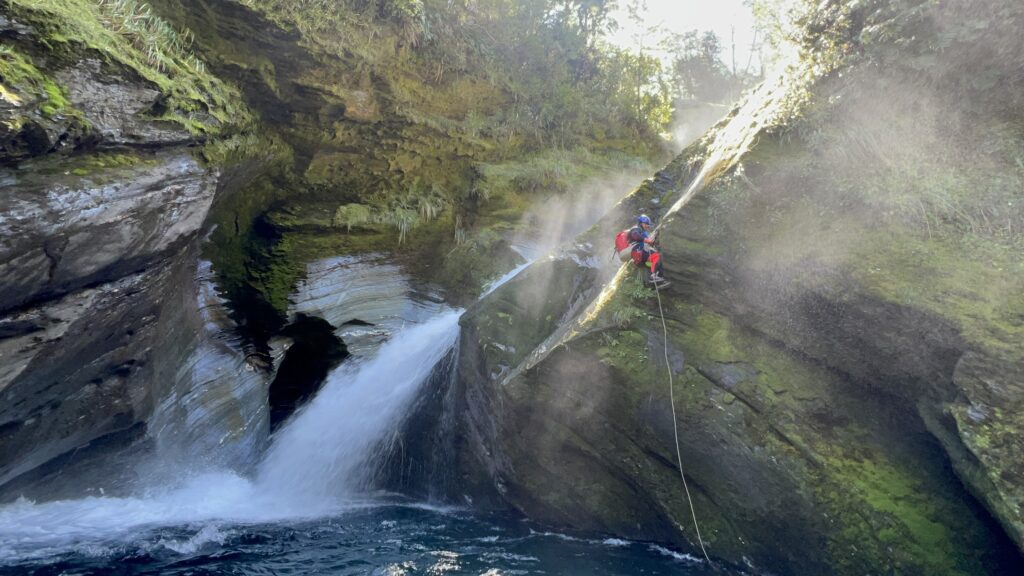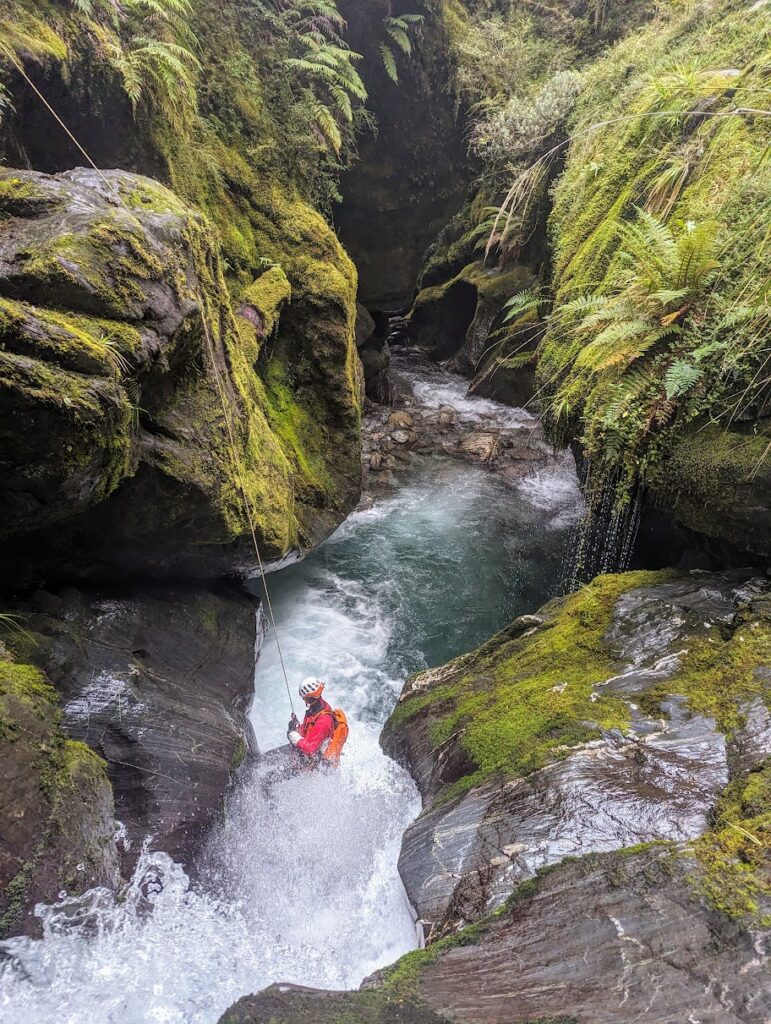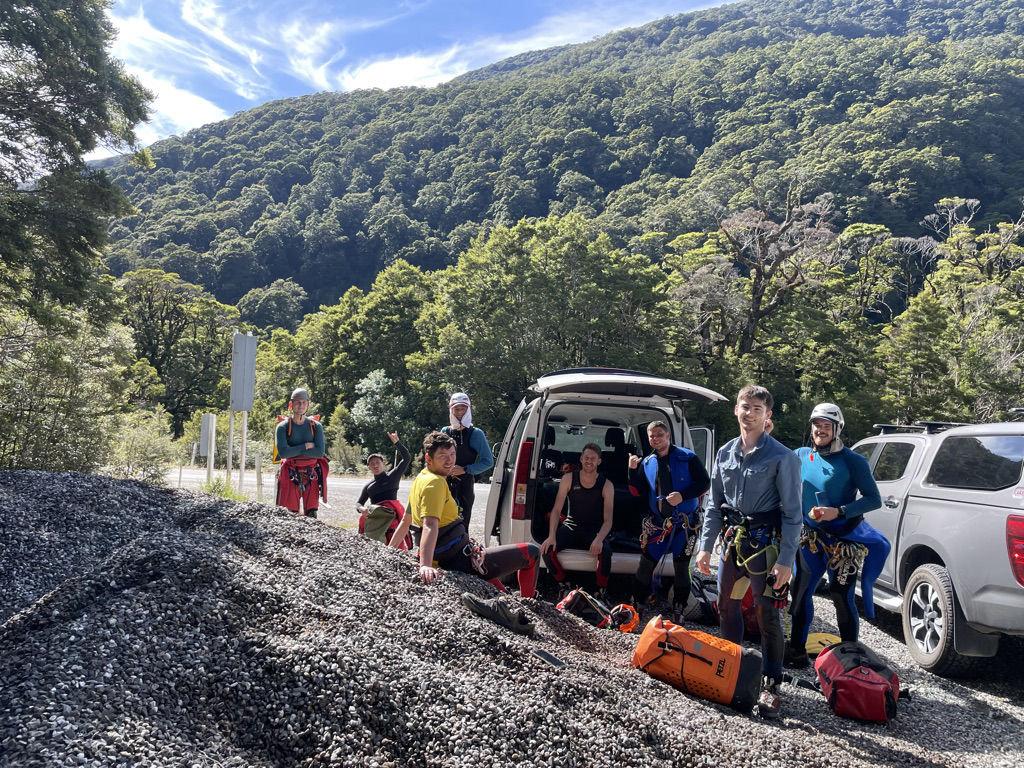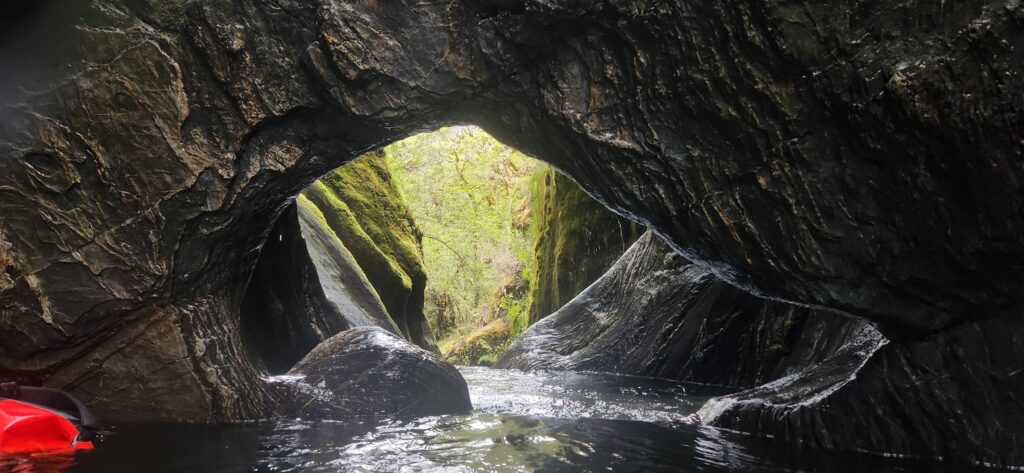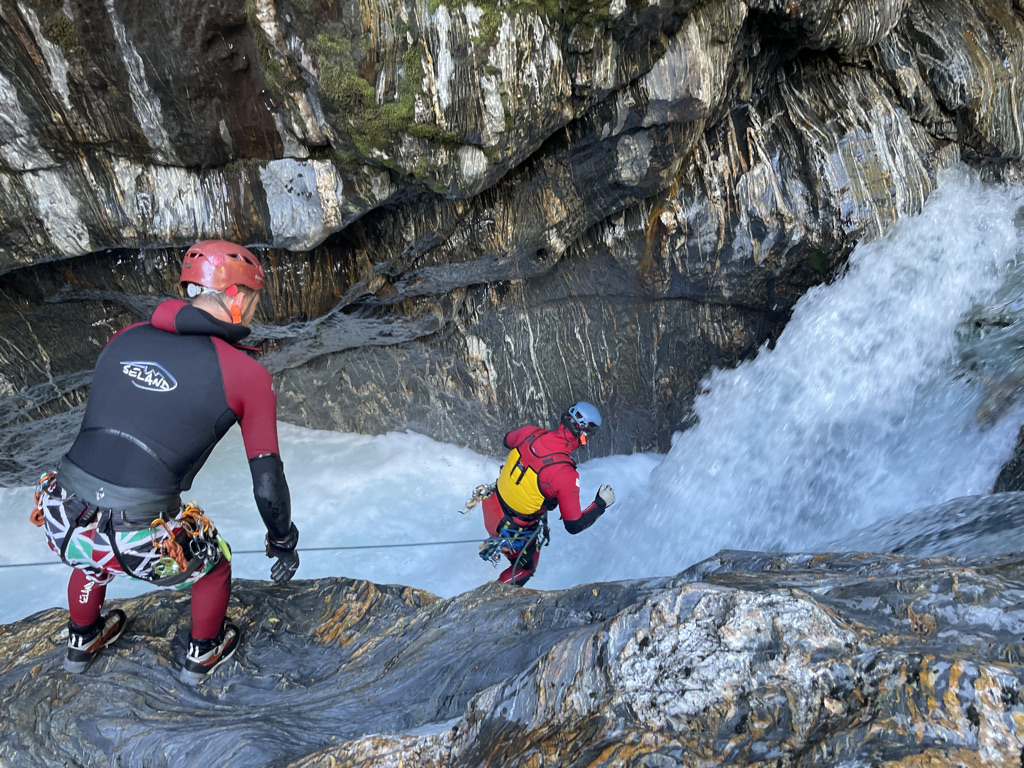We acknowledge the Ngāi Tahu, the Māori iwi (tribe), as the traditional owners and custodians of Haast Pass/Tioripatea where this adventure took place. We pay our respects to elders past, present and emerging.
Author: Daniel Gilbert
Introduction
Ever since I started canyoning, New Zealand had loomed in my mind as a destination and a goal. Nadav recounted me with tales of wild adventure, churning hydraulics, beautiful slots and short walk outs. I salivated over photos of the canyons, and read through all the trip reports I could find.
"I decided there were some places man was never intended to go, and that I was most certainly in one of them. And then it got dark ..." - Nic Barth after descending Gloomy Gorge (v6a6VI****)
Many of the canyons in NZ (and the ones I was most excited to descend) are classified as whitewater canyons, meaning they have significant current and hydraulic hazards that could flush you over the next drop or drown you. In the Blue Mountains, where I learnt to canyon, most canyons are graded v3a3 or below (the 'v' refers to the vertical risk and the 'a' refers to the aquatic risk) and Kanangra canyons go up to v4a3. In NZ many of the canyons are a4/a5, with some even going as high as a6. So, only wanting to drown a little bit, it seemed wise to build up some whitewater skills before attempting the NZ canyons.
The best introduction to NZ canyoning seemed to be through their festival, which runs every two years. This would give us the opportunity to learn from local canyoners, and attend one of the whitewater skills courses being run before hand. The 2024 festival was being run in Haast pass, one of the premier canyoning areas in NZ. So I put out the call to some canyoners within the club and we put in a Beanie Grant application to cover the cost of the course. Huge thanks to the club for approving us! In the lead up to the festival some of us also built up our skills in Australia, including a trip through Arethusa after rains and a trip down to Mount Buffalo, Vic (read their trip reports too!).
With much excitement Stephen and I arrived at the airport on Saturday morning, only to be told our flight was grounded after boarding the plane (Jetstar moment). -1 day of canyoning 😔. Going back through security on Sunday, we finally made our way into NZ and were greeted with stunning views over Fiordland / Te Rua-o-te-Moko national park. On Monday, we did two of the less aquatic canyons, Robinsons followed by Cross Creek. Robinsons featured the very amusing 'roundy roundy pool', a horizontal recirculation that managed to take Oli roundy roundy for a few laps. We left Cross Creek for second because it is known to have Didymo, so we didn't have to detox our gear in between. Cross Creek was also awesome, featuring endless jumps and slides.
Didymo
Didymo (rock snot) is an invasive aquatic algae that has a significant environmental impact and has invaded waterbodies in Europe, Asia, North America and New Zealand. It's also really really gross. It only takes one didymo cell to spread and infect a waterway, and once it establishes it's basically impossible to remove. Didymo is spread by humans or animals traveling between waterways, especially on wet gear. The rivers at the base of the canyons, and some of the canyons in Haast Pass have been infected with Didymo, so it was really important for us to disinfect our gear between canyons.
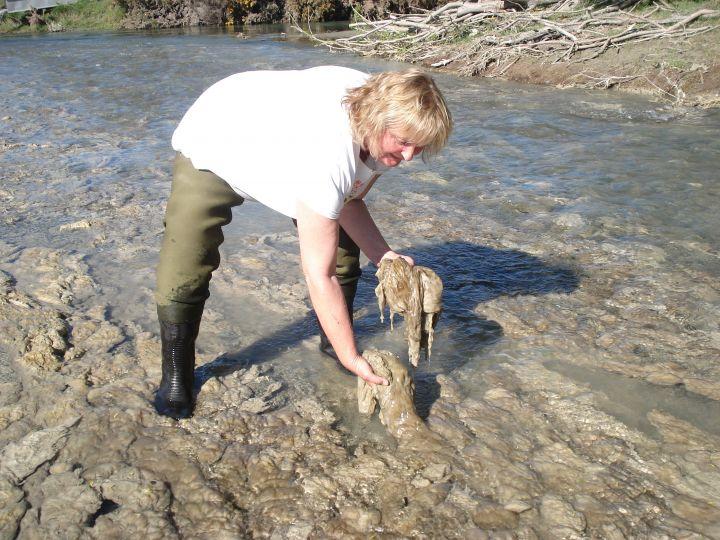
To prevent the spread, we followed the kiwicanyons recommendations and used detergent to de-didymo our gear. This involved buying a bunch of plastic tubs and filling them up with water and 2% detergent, we then submerged our gear for 10 minutes before hanging it up to dry (and having a beer while we waited as kiwicanyons suggested). The tubs were also great for storing our wet gear and not ruining the hire cars!
We de-didymo'ed our gear at the end of each day and between canyons when we did more than one in a day. This was except for Cross Creek, which is known to already have Didymo. On a few occasions we also had to cross an infested waterway on the approach to a canyon. In this case we carried a very high concentration solution of detergent in a spray bottle, and cleaned off our boots and pants.
Whitewater course
Tuesday rolled around and we met our instructor Koryn at the accommodation for some theory. We talked through some of the whitewater hazards (hydraulics/holes, undercuts, siphons/sieves, strainers, etc.) and where they might be found in a river. We also talked about identifying eddies, chill spots to hang out in amongst the crazy river (see below). Technical details about what we learned have been written up by Alfie in his amazing canyoning training manual, check out Section 7 (page 23) to learn about the various aquatic hazards you may encounter, and how to deal with them. Other good resources include canyonmag.net and ropewiki.
We then piled into the cars and made our way over to lower Fish River for the practical part of the course. We started off by practicing rope throws, both using rope from a throw bag and using the ropes flaked into our canyon bags. I found the canyon bag method to be more useful, as I pretty much always have a rope on me when canyoning, but it required me to attach the end of my rope to the shoulder strap so I could easily reach it to throw in an emergency. Koryn also showed us what a 'flip line' was, a ~5 m length of tape that you store wrapped around your waist for easy access when you need to throw a line to someone, this is something whitewater kayakers often carry.
Down in the river, we started by practicing a few general river crossing and rescue techniques. These were less focused on walled canyon environments, but still relevant as you may need to cross a river when getting in/out of a canyon (plus a good excuse to practice rope throws some more). We looked at how you can rescue a person trapped in the middle of the river when you have people on both sides, with one rope (see below) and then using a second rope to cinch the victim and help maneuver them to safety (video). We then all hopped in to practice catching eddies using the roll technique, plus got use to swimming in higher currents.
Heading downstream, we spent more time moving through the whitewater and identifying aquatic hazards out in the wild. We also went through a few more rescue techniques for when you can't throw a rope to someone. We used the flotation of our bags to help float a rope into tricky spots (i.e. in the recirculation behind a waterfall), and then connected ourselves to the rope for live-bait rescues. As part of this we learnt how to jump into white water (basically a belly flop), and discussed the pros/cons of tying yourself in hard or using a releasable system. We ran many simulations with the features we found, all taking turns to try the different techniques and get a feel for them. We also looked at options to protect others on certain features, including having spotters downstream who are ready to catch someone if they get swept away and push them into an eddy.
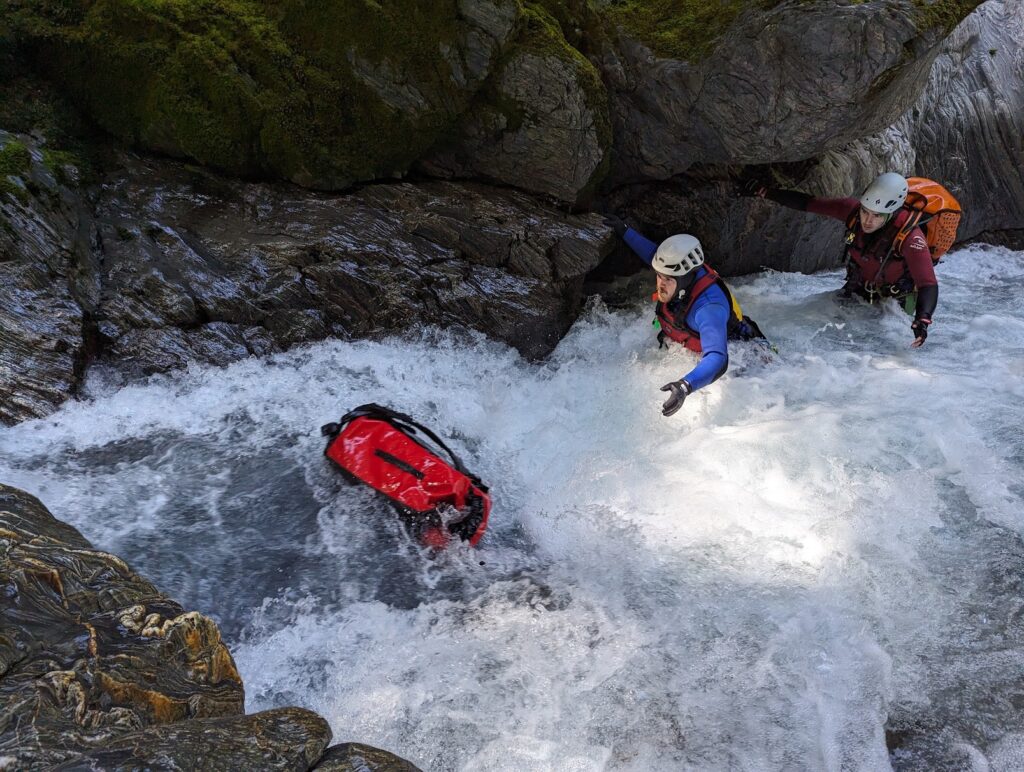
One moment I'll never forget was when we came across a hydraulic at the base of a 0.5 m drop. At this point I was overly eager to be pushed around by the water, so Koryn got me to tie onto a rope and jump in. Immediately I was helpless and at the water's whim, I got ragdolled around as nature's washing machine took me for a cycle. I lost my sense of up and down in an instant, and couldn't tell if I was at the surface or not because the water was so aerated. After what felt like an eternity (or 2 seconds), the rest of the team hauled me out and I spluttered back to life on a rock. Koryn then shared some self rescue techniques: balling yourself up so you sink down to catch a current leaving the hydraulic, spreading out your limbs like a starfish to catch a current, or alternating between both. I then got another chance to hop back in and, to my surprise, these techniques worked quite well! That being said, jumping into hydraulics is something you normally avoid, typically by going around or jumping over the boil line. The boil line is where air trapped in the hydraulic bubbles back up, on the upstream side water flows back towards the hydraulic, and on the downstream side it flows away.
The day was finished off with some practice using our rescue knives to free a tangled object/person. It was also a fantastic demonstration for why you should have a fixed blade knife for whitewater, not a folding rope knife. I was very impressed at how quick/easy it was to cut a tensioned line with the fixed blade, but when Lucas jumped in with his Spatha he spent much longer trashing about trying to open it up and cut the rope. It looked more like he was wrestling a crocodile!
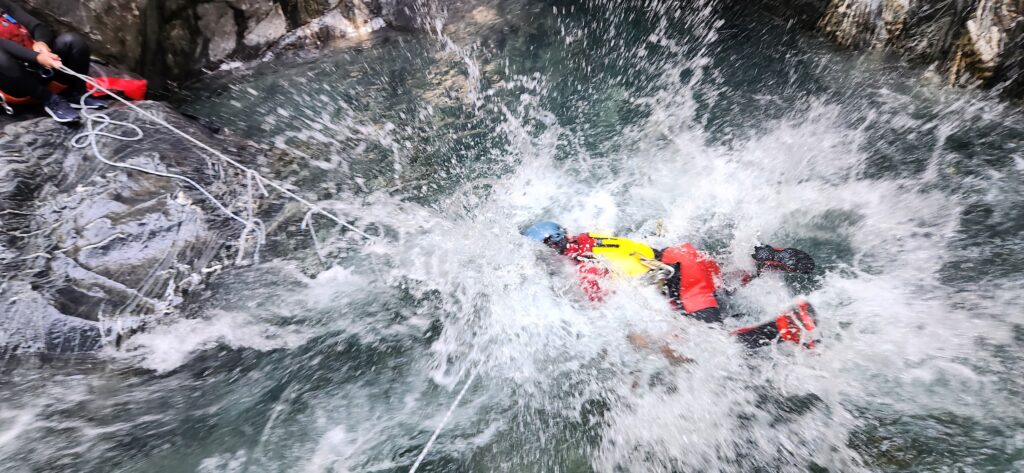
This was an amazing course, huge thanks to the club for sponsoring us, and for our awesome instructor Koryn. I learnt so much on this day, and continued to learn from experience and canyoning with others over the course of the NZ trip.




